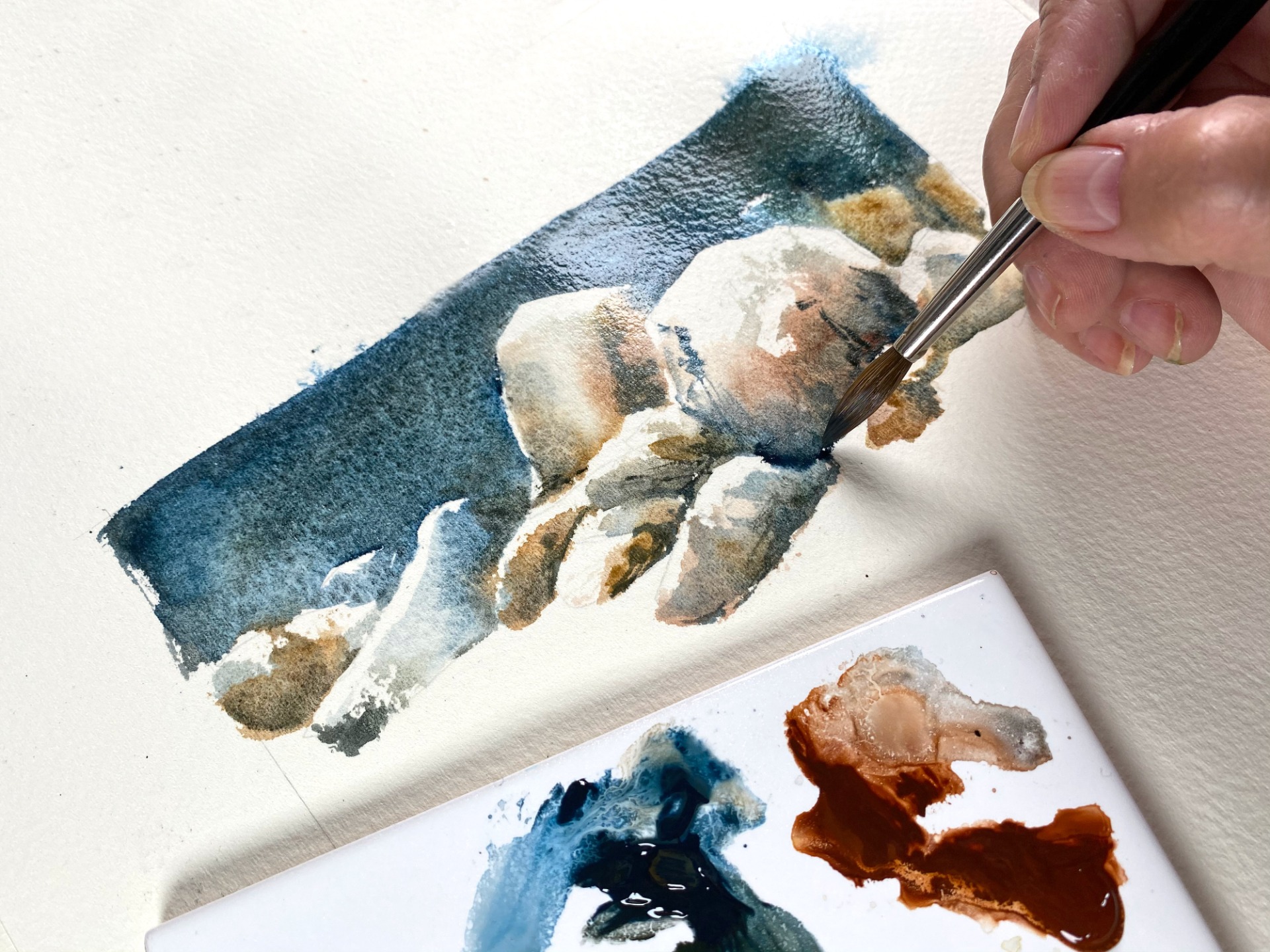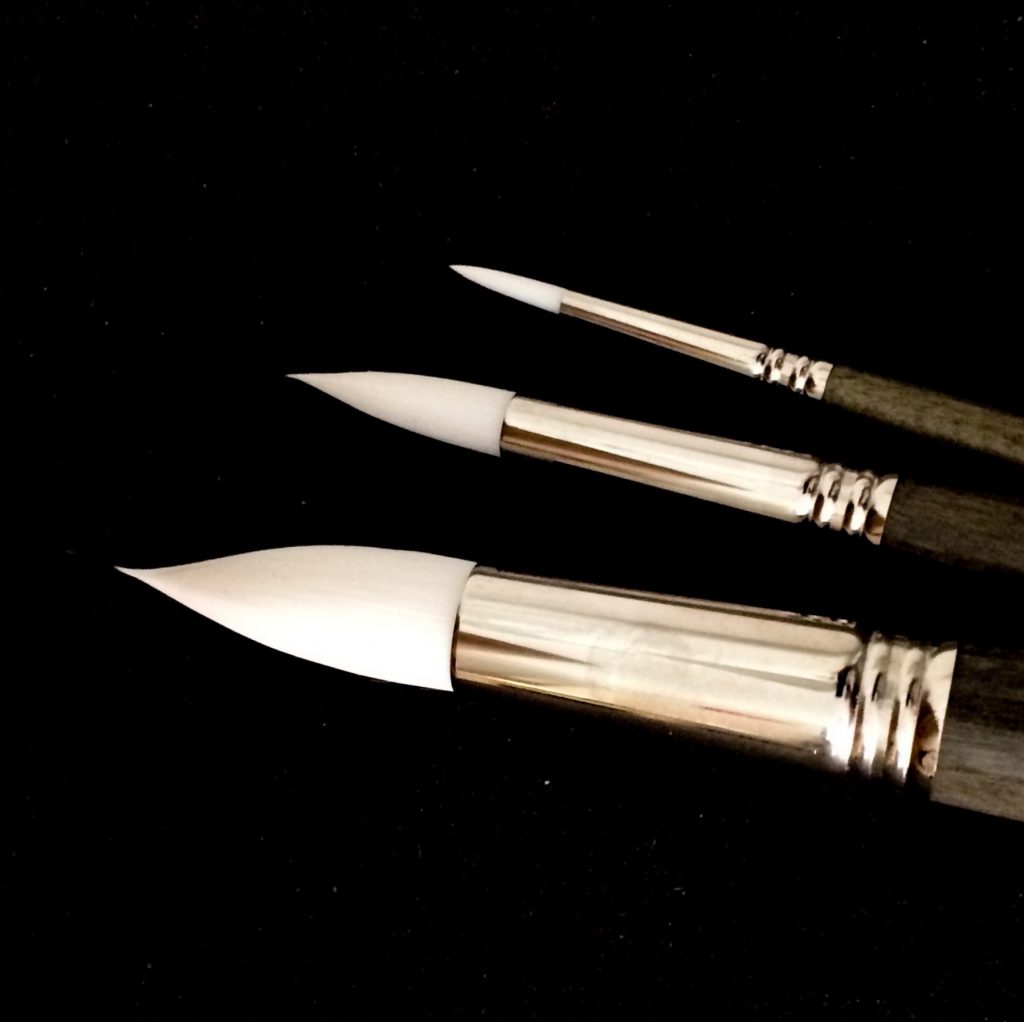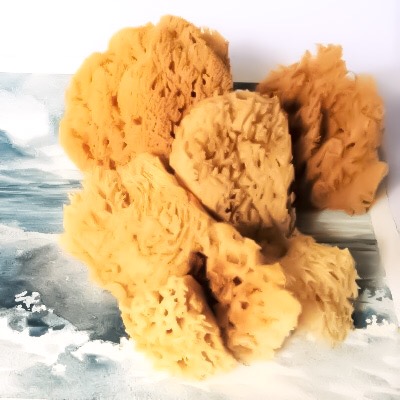AKVARELL
Mining for minerals in Tasmania to make Serpentine Genuine
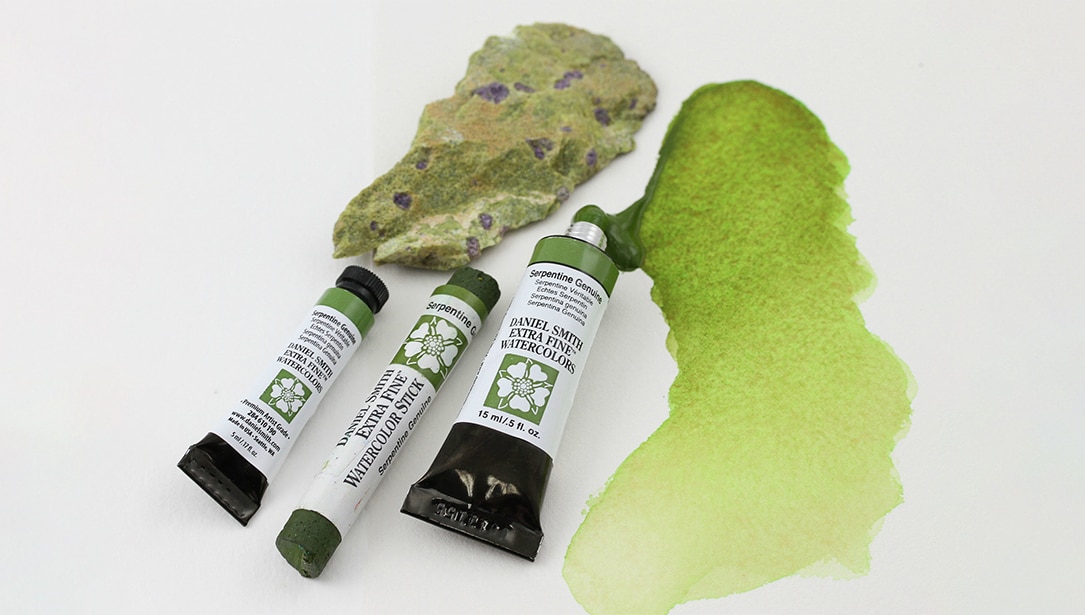
When John Cogley (owner of Daniel Smith) went to Australia to meet with artists and art
stores, he also visited the location where the serpentine mineral is obtained for
Serpentine Genuine, one of the PrimaTek colors. Here's what he had to say about the
trip!
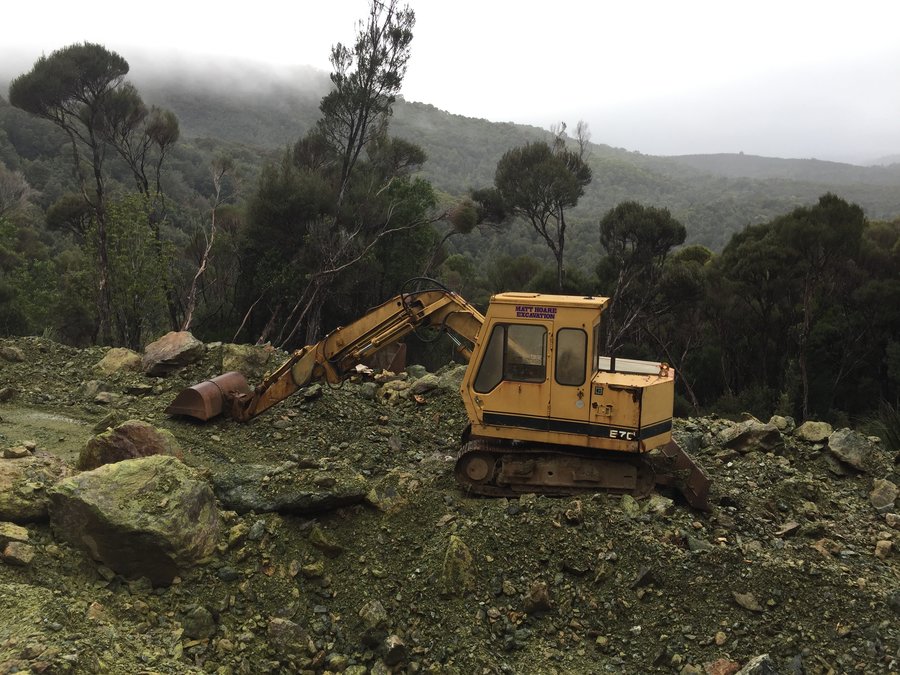
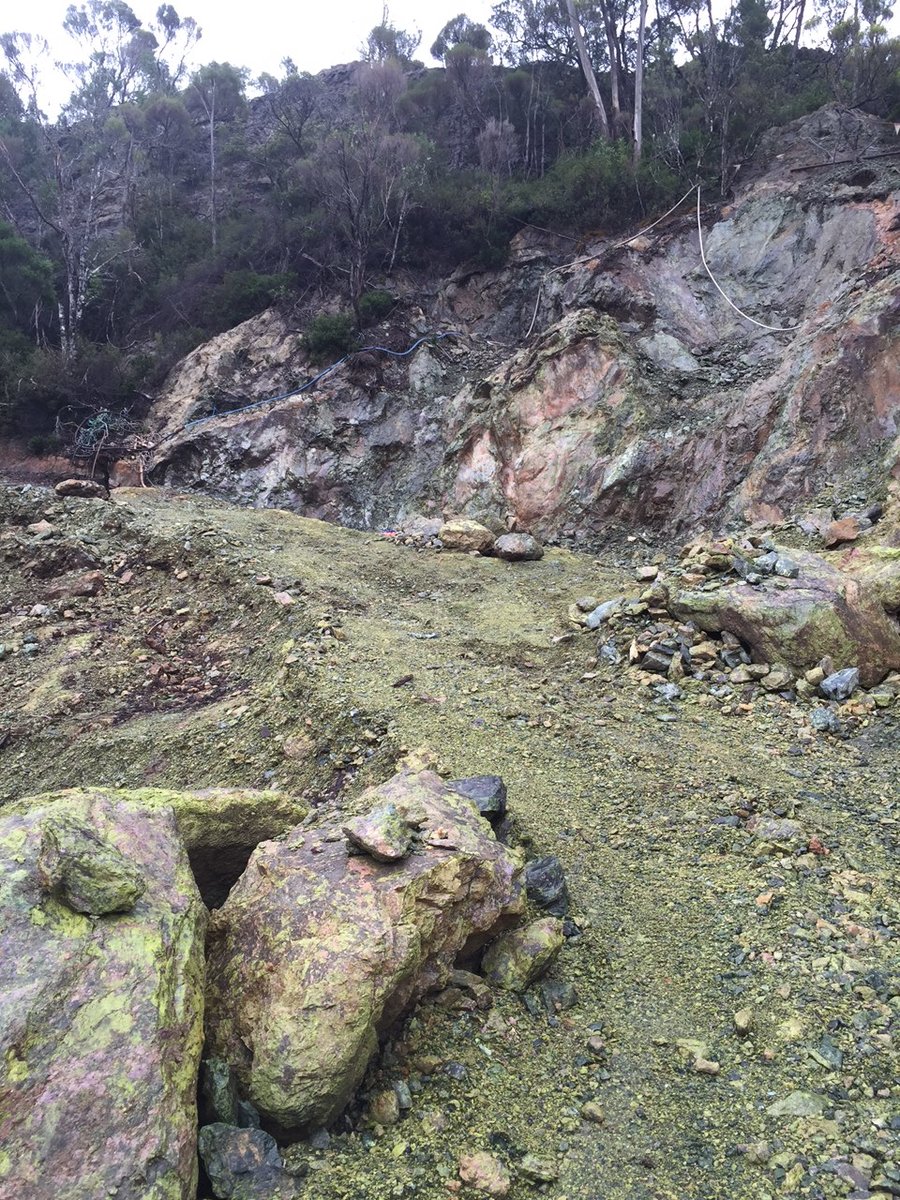
What were you doing in Australia?
"I went to Australia to explain how I make paint and then have artists put paint to paper. While I can explain certain characteristics of my paint, such as granulation, the best way for the artist to understand it is to see and feel the paint characteristics in action."
Why did you decide to go to the region to see where serpentine is mined?
"Just like artists, I have a curious nature. Over the years, I have spoken to my mineralogist Bruce about mines, but I had never visited a serpentine mine. I have been to mines all over the world and find them fascinating. Miners have such a great knowledge of the earth and a passion that is contagious. This mine was located near Zeehan, in the heart of Tasmania's mineral belt on the west coast. Tasmania is an Australian Island State at the most southern part of Australia."
What was the weather and the terrain like?
"We started off from Hobart on a very wet and cloudy day. The day became wetter by the hour until we were about one hour from Queenstown, upon which it began to pour and didn't stop until early the next day. The nights are very dark along the mountain roads we took and we missed some of the beautiful landscapes only to be recognized on our drive back from the mines to Hobart."
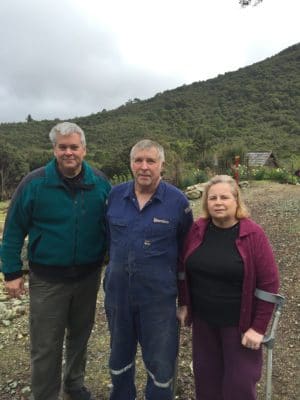
Tell us about the owners of the mine?
"Mike and Eleanor are two of only about five people that remain in what is now a ghost town. They have been there quite a while mining serpentine for the most part - green serpentine with beautiful, purple stichtite intrusions. The town population was once 1300 people. There are train tracks and switching stations without trains - people were driven away when the mine closed. Eleanor has a museum where she puts items like dolls and toy cars that she finds from past town residents."
Was it difficult to get to the mine?
"Yes, it would tear apart most of the modern vehicles today. It was fascinating to watch Mike's unique method of parking when he got out of the vehicle to open the gates to the surface mine. Mike would embed the front wheels of his truck deep into the ruts - try that with a non-military vehicle."
What was it like to be there?
"Awesome. The serpentine mine is a large slab-vein that Mike follows. Mike uses excavators to uncover the debris left after dynamiting, which exposes the mineral. Some of the boulders weigh thousands of pounds. It was so interesting to be surrounded by a sea of green mineral."
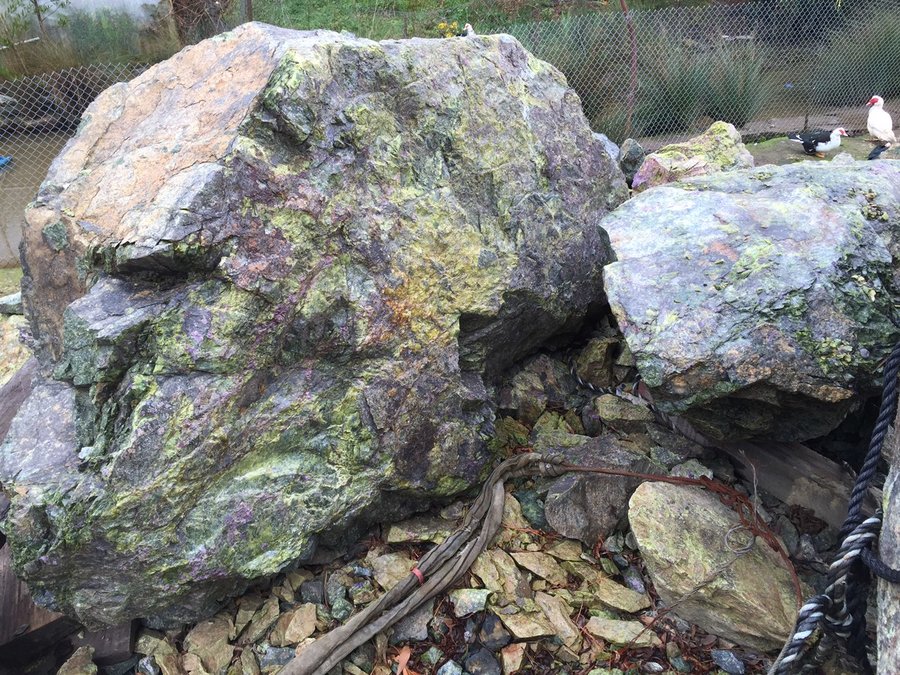
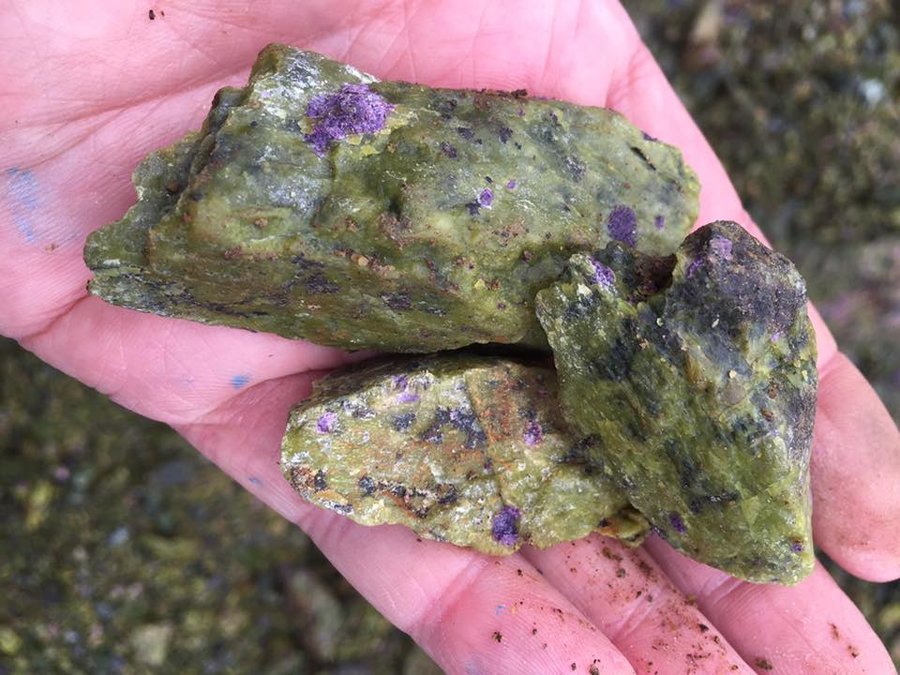
What sizes and colors of serpentine did you see?
"From the size of a washing machine down to the size of dime. The size is dictated by the weight the vehicles can bring out, not by the size that can potentially be created in the mining process. It looked very green. Some of the material was so dark, it looked almost black."
Did you show Mike and Eleanor what their serpentine mineral looks like as paint?
"Yes, I did. I wanted them to see the beauty that is created from that mineral - they thought it was very interesting that I create a paint from it. They showed me the carved pieces that they make from the serpentine."
Any final thoughts about your experience?
"It's a great feeling to challenge oneself by going to new places or trying new things. This was truly an Indiana Jones-worthy adventure!"

